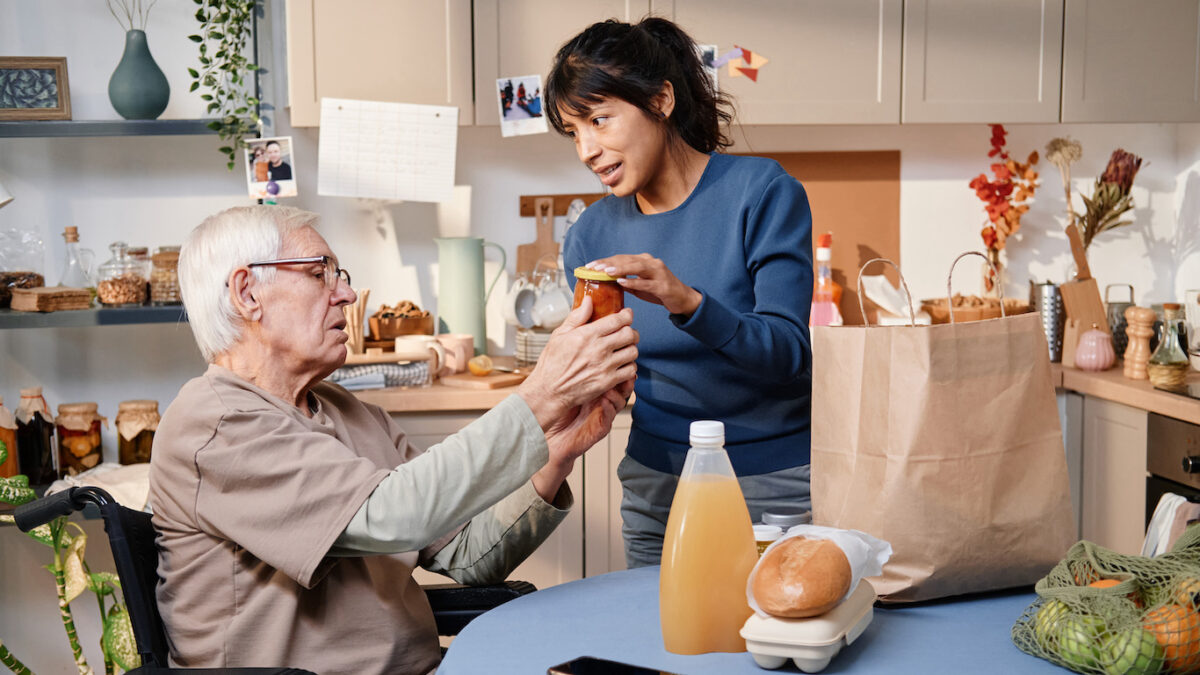Caring for the caregivers: What our home care pilot taught us about aging in place

Carmina Isabelle Zoleta, RN, MBA, LSSGB
Clinical nurse manager, Sharecare
Program clinical and operational lead
When we first launched the Person-Centered Care (PCC) Program in partnership with Legacy Health Endowment nearly three years ago, we had planned the pilot to last six months. Three years later, as our team releases a white paper detailing the real-life impact of the program, I feel incredibly proud of all we have been able to accomplish together beyond its initial scope – in particular, the lives of the patients and their caregivers that we’ve been able to support – while creating a new model of in-home care.
As the clinical and operational lead, I engaged with the participants daily, which gave me a clear view of their challenges and allowed me to work directly on solutions that could address their needs. Our teams in turn created a framework that offers up to 32 hours of monthly in-home respite care by trained, tech-enabled caregivers, delivering free support to low-income seniors in rural California who do not qualify for Medicaid. Our white paper presents our findings, which reveal that investing in respite care for families supporting chronically ill loved ones at home can help reduce overall healthcare costs for all stakeholders, while improving the quality of life for older adults aging in place.
One of the most compelling findings from this pilot was how significantly home care reduced burden for family caregivers:
- Caregiver burden decreased by 39.1% overall, and, among those with the highest burden, risk scores fell by 63.6%.
- Among seniors who initially were screened at-risk, loneliness scores dropped 23.4%.
- Nearly half (48%) of affected participants no longer screened as clinically lonely.
The data shows that caregivers with the highest burden levels experienced the greatest improvement over time. Moreover, by supporting the network of care around the patient, healthcare stakeholders can simultaneously improve outcomes for aging adults at a fraction of the cost of institutional care. As my collaborator Dr. Shapiro explained while advocating for increased funding for respite care, in-home support provided through the program cost under $1,000 per participant per month, compared to over $5,000 in facility-based alternatives.
Professional tech-enabled caregivers are better advantaged to uncover patient needs and fill care gaps, due to their increased time and familiarity with patients versus facility-based providers, as well as their ability to capture real-world data and build patient trust, while serving as an extension of care teams in the home. Beyond assisting with activities of daily living (ADLs), the caregivers in our program were able to conduct biopsychosocial assessments (including physical and mental health, medication adherence, social determinants, and fall risk screens) and were integrated into a digital platform to escalate issues and coordinate referrals.
One case involved a 64-year-old man recovering from a stroke and managing active cancer treatment. His wife, 77, was also facing serious health challenges. We enrolled them both to receive free monthly in-home support to assist with daily tasks, medical appointments, and rehabilitation exercises. A home safety assessment further uncovered critical hazards: unsafe bathroom access, aging fixtures, and a failing ramp that served as the only wheelchair entry.
Through our program’s home safety evaluation and modification partner, an occupational therapist conducted a virtual assessment and recommended the installation of grab bars in the bathroom and hallway, a shower chair, and a full replacement of the ramp. All modifications were funded by the program’s grant, transforming their home into a safer, more accessible environment. Though the couple continues to face occasional hospital visits due to acute health issues, they have been able to remain safely and comfortably in their home for nearly three years—with the ongoing support of the program and their dedicated Sharecare caregiver.
In addition to identifying and addressing health risks and support needs, caregivers help individuals maintain their autonomy, even well beyond the U.S. median life expectancy. Take, for example, the story of a 105-year-old woman who came to us after her 103-year-old husband entered assisted living. She wanted to remain at home (as do most aging seniors) but was assessed to have a high fall risk, and she lived alone.
To help support her wishes, our team provided more than 2,700 hours of in-home care over the last two years to support her with activities of daily living (bathing, grooming, mobility, etc.), as well as with social needs like companionship. The impact of this care has been profound. With Sharecare’s home care services, she has been able to stay in the comfort of her own home, surrounded by familiar memories and a sense of independence, instead of transitioning to a long-term care facility, like her husband. Despite her history of breast cancer (now in remission), arthritis, and thyroid condition, she continues to show extraordinary strength and resilience.
Caring for caregivers was just as central to the program as the care provided for these patients. Our data on respite care shows home care strategies can and should address more than support for aging in place; it’s about empowering families, reducing caregiver burden, and creating better outcomes for everyone involved. When we serve the needs of primary caregivers and their care recipients with programs, grant funding, and both digital and high-touch support interventions, we strengthen the entire care network around the patient.
I hope to see programs like this extended, regardless of where federal policy on home care lands. The data in our white paper provides a clear return on investment and highlights improved patient outcomes that warrant argument for continued action. This model works. Now what’s needed is the support to continue to scale respite care models to become a standard component of care for aging patients, which benefits all stakeholders—payors, government organizations, and families alike.